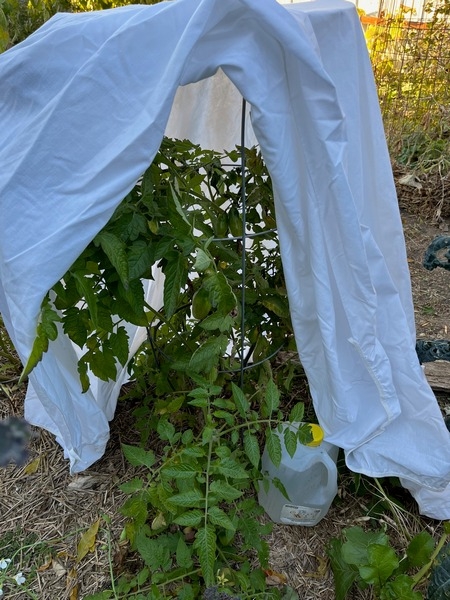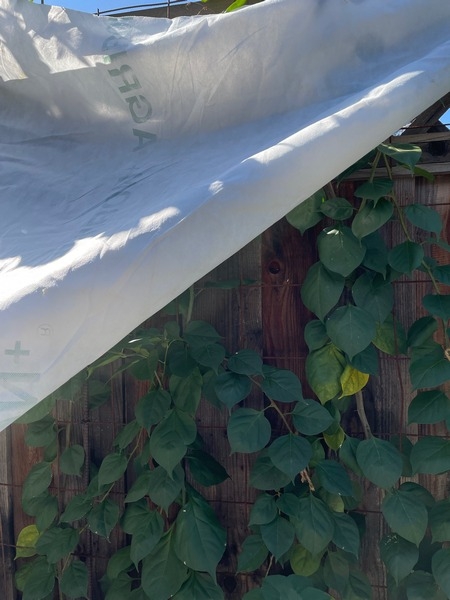Bundle Up! Winter's Coming! - Preparing for Frosty Temperatures
Note: We are running this previously published article because it's important to be ready to protect sensitive plants. Don't get taken by surprise!
It's time to get ready for cold winter temperatures and to start preparing protection for citrus trees and other frost-sensitive plants. Depending on where you live in Contra Costa County, your first frost date may be as early as Halloween. However, November 15 is often thought of as a first frost date in much of our County, with slightly earlier in the eastern portion and later in the more temperate West County areas. Because significant climate variation can occur, it's good to start thinking of frost protection early, before you need it.
Frost can start to occur when the temperature gets below 36°F and is sure to happen at 32°F. When temperatures drop below 32°F, it becomes a freeze, and if it drops below 28°F, it's a hard freeze.
Protecting plants when temperatures drop in the Bay Area can be done using three simple elements:
Water: It may seem counter intuitive, but water can provide protection from freezing temperatures. When dry soil freezes, moisture is pulled from the roots, causing damage. If the soil is moist, it can freeze without harming roots. Wet soil also holds more heat than dry soil. When the forecast calls for 32°F or below at night, water the ground around your plants lightly in the late afternoon or early evening. The exceptions to watering plants before frosty temperatures are succulents. They need to be kept dry when a freeze is expected if you can't move them into a warmer spot.
Frost Covers: Protect tender plants and trees with frost covers either purchased or homemade. Sheets, blankets, tarps, or burlap can be used, but these need to be propped up above the leaves and removed in the morning. These materials can become wet with dew and damage sensitive leaves. Commercial frost cloth comes in several weights and can provide up to 4°F protection (find it at your local nursery or home and garden store). It can float over the top of the plants and can be left on for several days since light can pass through it. For very sensitive plants, make sure the cover goes all the way to the ground. If very cold temperatures are forecast, also wrap the trunk of a young citrus tree with cardboard to protect the bud union and above.

Covering or tenting should be done in the late afternoon or early evening when freezing temperatures are predicted, then removed in the morning after frost has thawed to allow for healthy air circulation and to allow the soil to warm in the sun.
Heat: Moving potted plants indoors, into a greenhouse, or even grouping them together under a tree or house eaves to conserve heat will give enough protection for many plants. A light bulb (100-watt designed for outdoor use) or Christmas lights (old-fashioned incandescent type lights—LED lights do not emit enough heat to help) under a frost cover can add additional heat. Make sure you use extension cords and lights rated for outdoor use.
If plants have suffered damage from frost, wait to prune until spring. Frost-damaged areas on plants can add protection to parts below if there is another freeze. You also don't want to stimulate the plant to put out new tender growth that would surely be damaged in another frost.
Following is a link to a UC publication titled Frost Protection for Citrus and Other Subtropicals: https://anrcatalog.ucanr.edu/pdf/8100.pdf
Help Desk of University of California Master Gardener Program of Contra Costa County (SEH)
